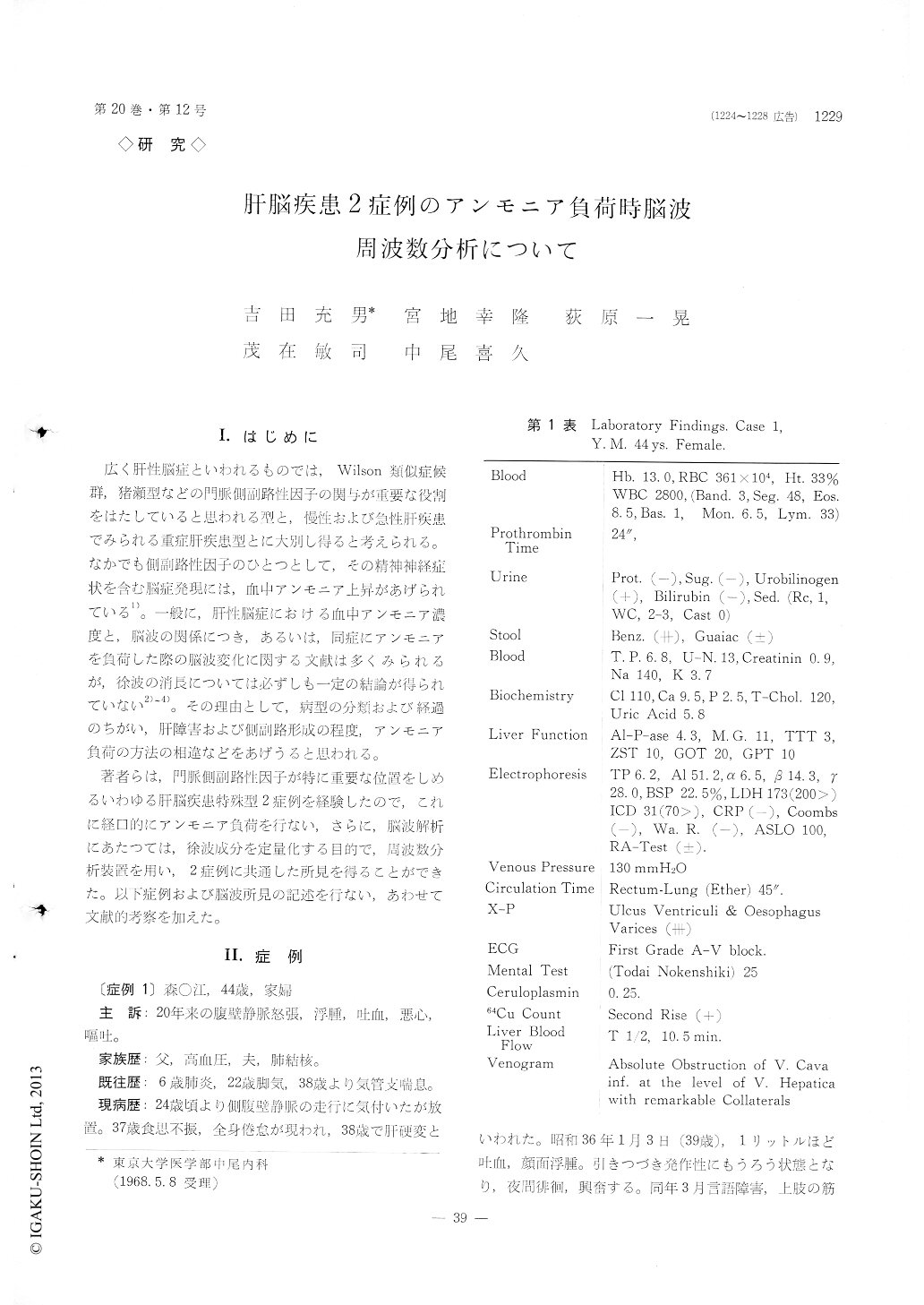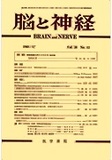Japanese
English
- 有料閲覧
- Abstract 文献概要
- 1ページ目 Look Inside
I.はじめに
広く肝性脳症といわれるものでは,Wilson類似症候群,猪瀬型などの門脈側副路性因子の関与が重要な役割をはたしていると思われる型と,慢性および急性肝疾患でみられる重症肝疾患型とに大別し得ると考えられる。なかでも側副路性因子のひとつとして,その精神神経症状を含む脳症発現には,血中アンモニア上昇があげられている1)。一般に,肝性脳症における血中アンモニア濃度と,脳波の関係につき,あるいは,同症にアンモニアを負荷した際の脳波変化に関する文献は多くみられるが,徐波の消長については必ずしも一定の結論が得られていない2)〜4)。その理由として,病型の分類および経過のちがい,肝障害および側副路形成の程度,アンモニア負荷の方法の相違などをあげうると思われる。
著者らは,門脈側副路性因子が特に重要な位置をしめるいわゆる肝脳疾患特殊型2症例を経験したので,これに経口的にアンモニア負荷を行ない,さらに,脳波解析にあたっては,徐波成分を定量化する目的で,周波数分析装置を用い,2症例に共通した所見を得ることができた。以下症例および脳波所見の記述を行ない,あわせて文献的考察を加えた。
The report dealed with the 2 cases which showed unconscious attacks or extrapyramidal disorders ; with underlying disorders of the Budd Chiari Syn-drome in the one case and the hepatic cirrhosis in the other. Either of them was clinically charac-terized by hyperammonemia and by abundant for-mation of the collaterals between the portal vein and the vena cava inferior. Thus both of them, together with the neuropsychiatric symptoms, could be classified as the "specific form of hepato-cerebral degeneration" proposed by Inose.
Under the general assumption that the increased ammonia level in blood plays an important role for inducing the neuropsychiatric symptoms, especially in the cases with the abundant collateral formation, ammonium citrate was administered to them ; doses of which being 21 gr. and 14 gr., respectively. Sim-ultaneous recordings of the blood ammonia level as well as EEG changes were analysed quantitavely through EEG analyser equipment, revealed that there was a concomitant parallelism between the in-creased level of blood ammonia and increased amount of the slow waves in EEG. Comment of the results were made refering the related literatures.

Copyright © 1968, Igaku-Shoin Ltd. All rights reserved.


